Let’s face it – websites are time-consuming. From the technical setup to the design, and the fresh content needed to satisfy Google’s search algorithms, the thought of having to create a website is a daunting task for many of us.
Especially for those who are just starting out with their business or side hustle.
But every successful business needs an audience – an audience of people interested in what they’re selling or offering as a service.
And the best way to build an audience is with an email list. Sure, you can build an audience on social media platforms. But organic reach on social media is notoriously pitiful and ultimately you’re borrowing the audience from Facebook, Twitter et al., – you can only reach this audience via the platform.
Which is what makes email marketing so important.
Thankfully though, you don’t need a website to build an email list and start email marketing. You can grow a community of subscribers without one. And in this article, we’re going to look at how.
Page Contents
The tools you’ll need to build an email list
In order to build an email list from scratch, you’re going to need a page on the internet with a form via which you can collect subscriber’s contact details.
This can be broken down into two parts:
- A landing page – this will have a URL that you can share with people
- A sign-up form – this will consist of fields where subscribers enter and submit their contact details
On top of this, you’re going to need an email marketing service to manage your list and send email campaigns.
The good news for you is that email marketing services often come with landing page builders and customisable sign-up forms. So you have everything you need in one tool.
And even better news is that many email marketing services, including EmailOctopus, offer a free plan so you can build your email list from zero without paying a dime.

What to include on your landing page
For your landing page to be successful and convert visitors into subscribers, it should include:
- Your value proposition – explain to people how they will benefit from joining your mailing list. This is what will persuade them to sign up.
- An outline of what to expect – let potential subscribers know how often you’ll be emailing and the sort of content you’ll be sending.
- Opt-in form fields – at the very least you’ll need to ask for an email address though you might also want to ask for a first name so that you can personalise your future email communication with a subscriber’s name.
- Call-to-action button – this button is what will encourage visitors to take action and subscribe, so it needs to be bold and use persuasive words.
- Images – a landing page without any images would be boring. So for maximum visual impact, include an image or two. This could either be a background image occupying the full space of your page. Or you might prefer to include smaller images on top of a plain block colour background.
Here’s an example of an eye-catching landing page with a compelling CTA – “Become a better designer”.
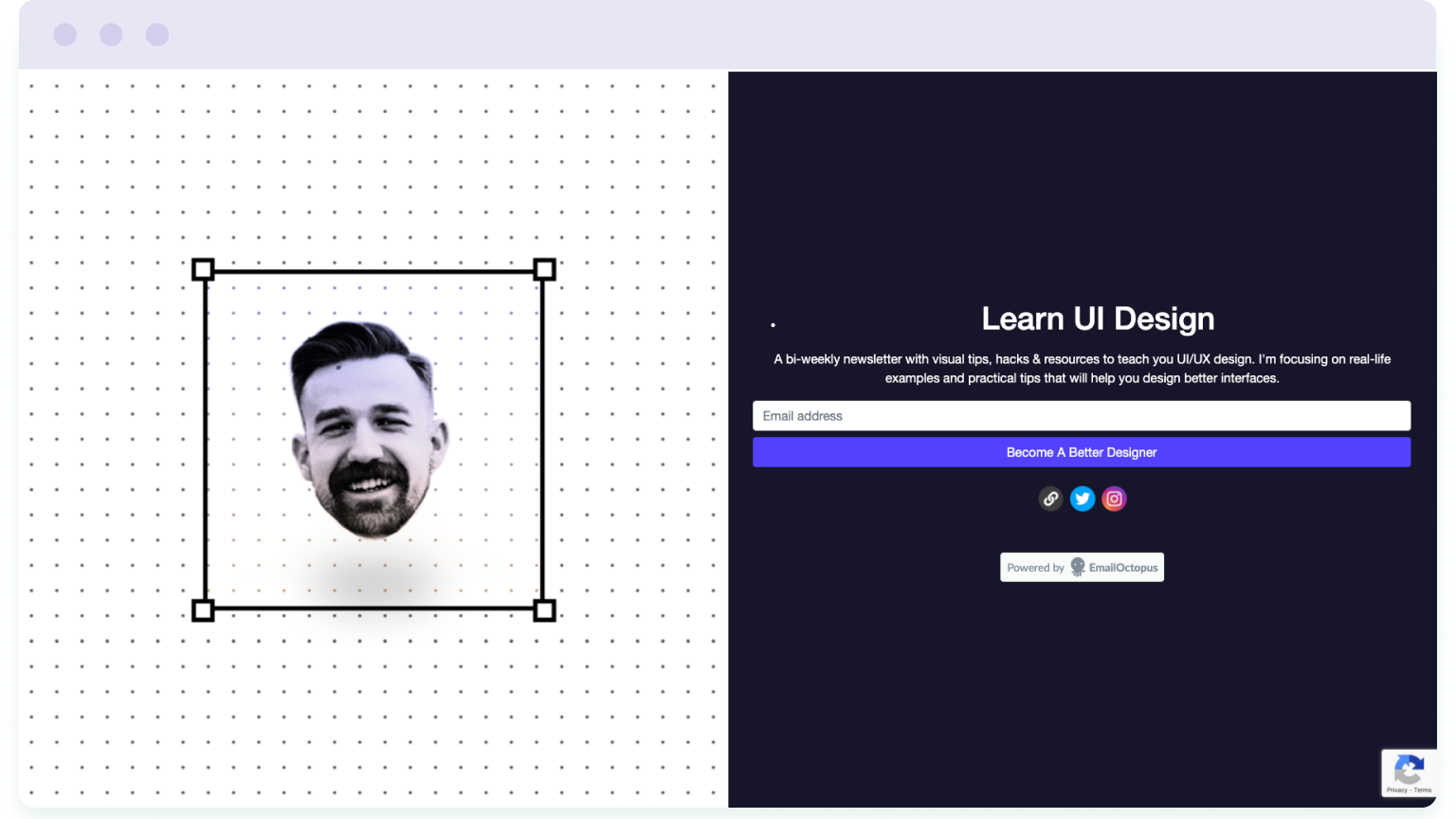
Social media icons – yay or nay?
Whether you should include links to your social media channels on your landing page is up for debate. On the one hand, by only including a single link on your landing page (the CTA button that submits a subscriber’s contact details), you focus attention on this one conversion. Which, if you’re trying to build your email list, is the most important conversion.
By including additional links you create more opportunity for visitors to click off-site and get distracted. Which means you increase the chances of missing out on that important email subscription.
On the other hand, if growing your social media following is equally as important and you prefer giving visitors the option of how they engage with you, then you might want to include social media icons with links to your pages.
For more landing page advice, see our 10 powerful conversion tips for a better newsletter landing page.
Strategies to grow your list with only a landing page
Once you’ve got your tools in place, it’s time to start getting people on your list.
And whether you’re preparing to launch a product or starting a personal newsletter, you can build an email list with nothing more than a landing page and sign-up form.
Here’s three of the best strategies how.
Create a lead magnet
A lead magnet is a free resource that is offered to people in exchange for their contact details. Essentially, you create something of value for your target audience and send it to them by email. And, of course, in order to do this, you need to collect their email address.
By creating a free resource that’s relevant to both your business and your target audience, you attract people that are more likely to buy from you (or take whatever conversion step matters most to you).
Examples of a lead magnet include:
- ebooks
- templates
- email course
- white papers
- free samples
- exclusive discounts
- training videos
- checklists
The best lead magnet for you will depend on your industry and niche. For example, if you’re an author building their email list, a good lead magnet might be a chapter preview of your next book. Or a free copy of one of your older books.
Whereas if you’re a food blogger, a better lead magnet would be a PDF of your most popular recipes. Or a short email course with tips on how to be a better cook.
Once you’ve decided on a suitable lead magnet and created the final product, you’ll need to add this to your landing page. Include an image of the lead magnet with a short explanation of what it is and how it will benefit your audience. The goal is to make the lead magnet seem as enticing as possible so that visitors to your landing page feel compelled to sign up for it.
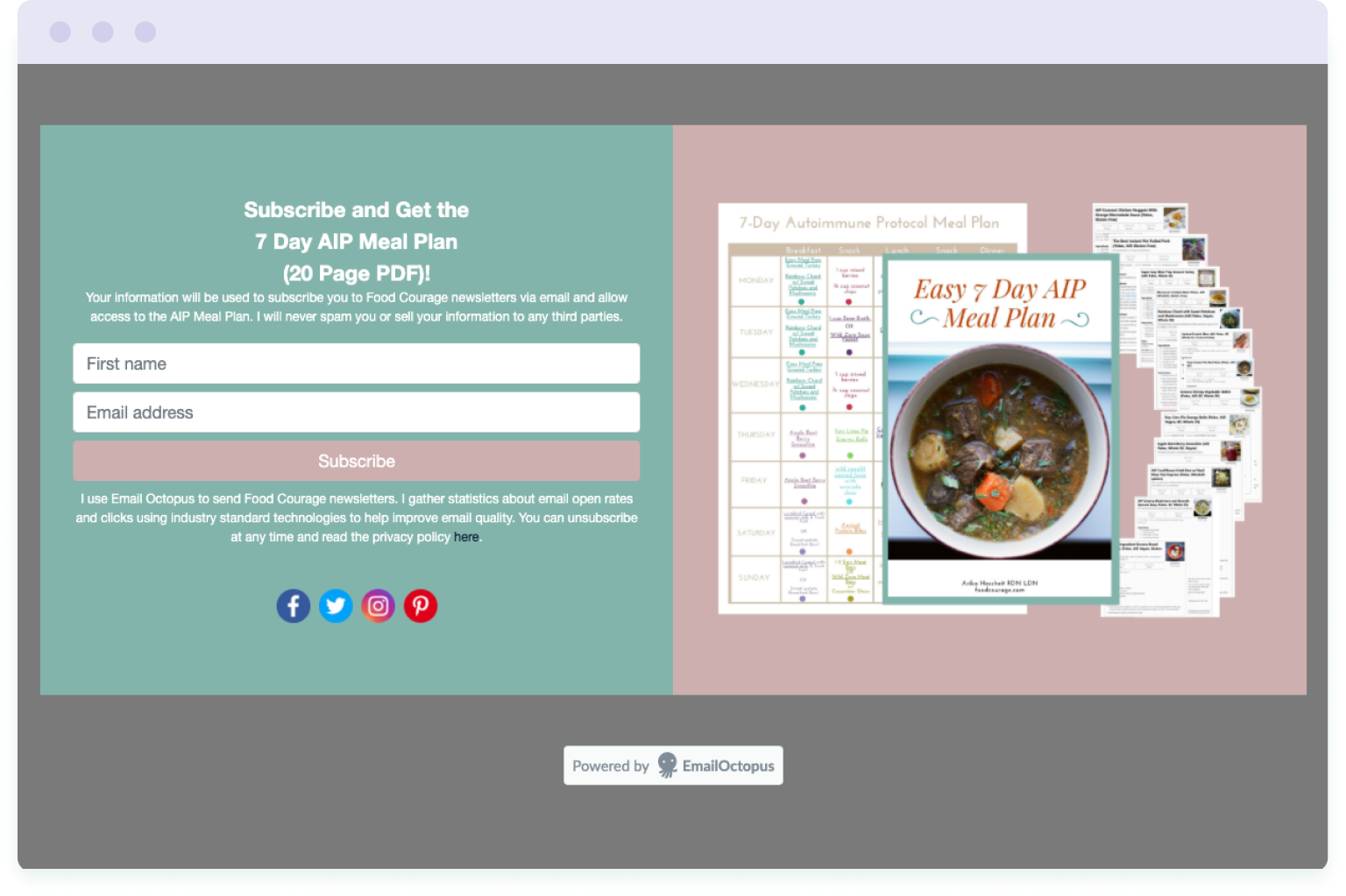
Promote your lead magnet on all available channels
It’s not enough just to have a lead magnet – you need to actively promote it in order to build your email list.
Your existing channels are a good place to start.
The first thing you should do is update your social media bios to include a link to the landing page where you’re collecting sign-ups for your lead magnet.
Here’s how Email Mastery promotes their email course on their Twitter page:
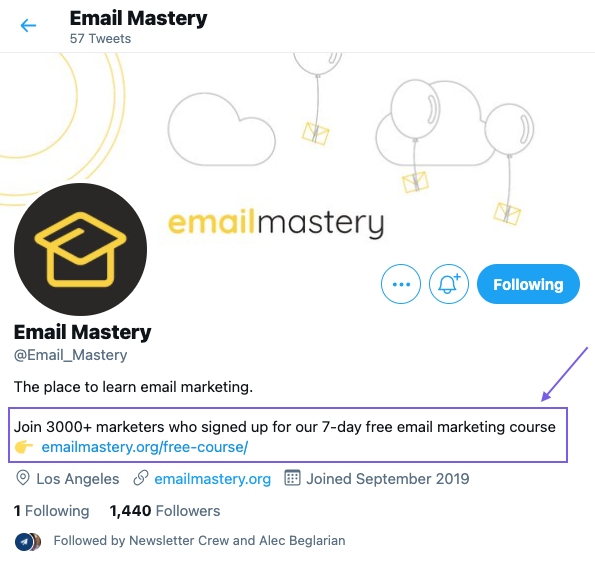
With Twitter, you also have the option to pin tweets so that they’re the first thing a person sees when viewing your feed. So for double exposure, try this tactic too.
On your social media channels you can also update bio pictures to promote your lead magnet. Using a free tool like Canva, design a banner image that shows off your lead magnet and includes a call-to-action to encourage visitors to sign-up.
Here’s how marketing consultant Sarah Stiffen does it on her Facebook page:
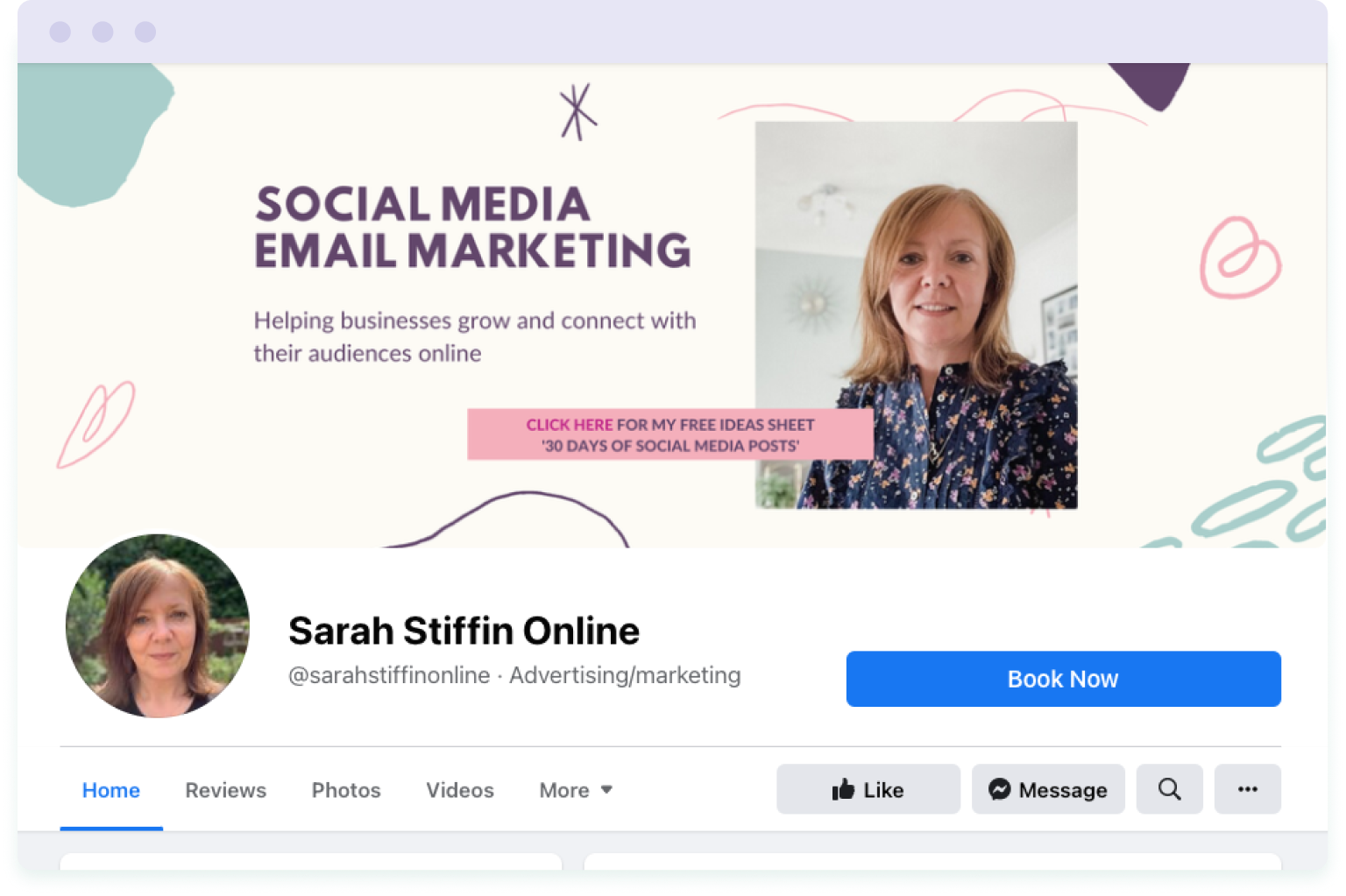
But don’t stop there – if you want to grow your email list faster, consider paid ads. This extends your reach quicker than relying solely on organic traffic to your social media channels. Plus, it means you can target the right audience.
The SEO business Moz are well-known for their content marketing – they’re constantly producing high-quality content about SEO. And they often create lead magnets, including templates and strategy guides.
But they don’t wait around for people to come to them for their lead magnets – they use social media ad platforms, including Facebook, to promote their content to their ideal audience. Here’s an example of a recent Facebook ad of theirs:
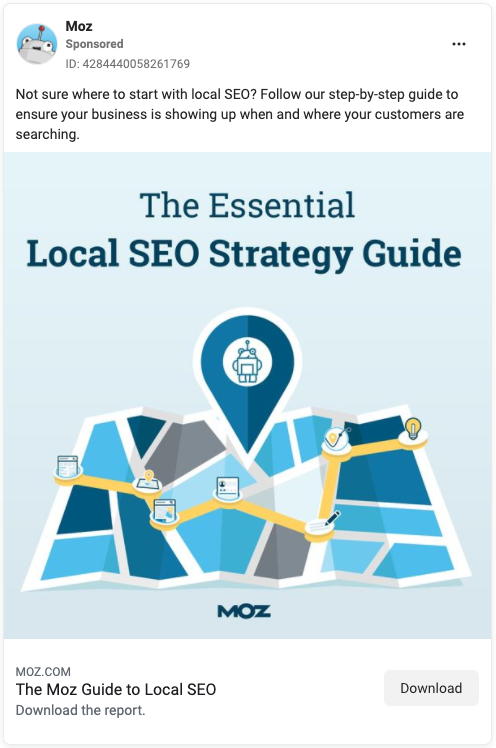
The ‘download’ button takes you to a landing page where you enter your contact details to receive a copy of the free guide.
When setting up ads in platforms like Facebook to promote your lead magnet, your chose CTA button should also link to the landing page where you capture a visitor’s contact details. Then, using your email marketing tool, you automate the delivery of the lead magnet.
The result?
A win for you – a new lead in your mailing list.
And a win for the subscriber – they’ve just received a valuable piece of free content.
Publish content with links back to your sign-up form
Your followers on social media channels expect lots of high quality content served to them natively within the platforms.
And you can use this to your advantage by publishing long-form content with links to your sign-up form. This works particularly well if you are offering a free lead magnet. But it can work just as well without – in this case, the hook would be that your social media followers get more great content in their inbox by signing up to your mailing list.
LinkedIn is a good option for B2B brands, consultants and freelancers looking to build their email list. You can use the Articles feature to write think-pieces, guides and round-ups related to your business and sign off with a CTA of “join my mailing list” or “download my free XYZ” to convert readers into subscribers.
Here’s how personal branding expert Brittany Krystle does it with her article on LinkedIn:
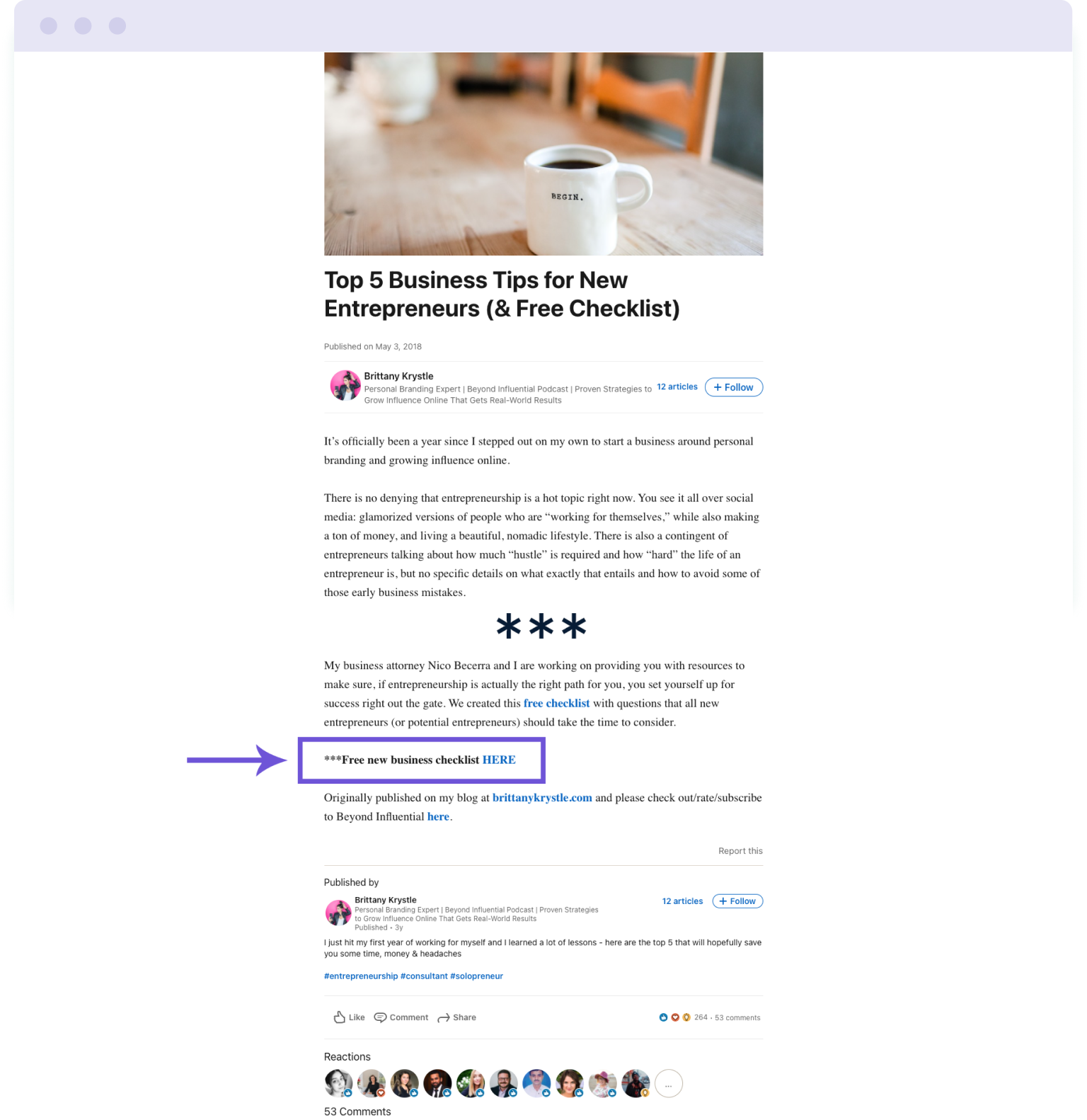
Another great platform for publishing long-form content is Medium. You do need to constantly write fresh content in order to succeed on the online publishing platform. But if writing is part of your gig, then you can use your articles as a way to get more eyeballs on your lead magnet. And more readers onto your mailing list.
Here’s how Medium writer Ayodeji Awosika does it:

At the end of his article, he invites readers to grab a free checklist and, in exchange, Awosika gets their contact details.
Another option is to write guest posts for other websites. This is labour and time-intensive so might not be the quickest way to grow your email list.
But if you can get an article published on a high-traffic website, you might be lucky enough to pick up a few hundred subscribers just be including a link to your landing page in your author bio.
Ways to collect email addresses without a website or landing page
The three strategies we’ve just looked at require a landing page and a free piece of content to serve as a lead magnet.
But what if you don’t want to create a lead magnet? Or don’t have the inclination to build a landing page?
Well, thankfully there are two tactics you can use to grow your list without either a landing page or a lead magnet.
Host a giveaway
People love a freebie. People also love winning.
Which is why running a giveaway could be one of the quickest ways to build your email list. And thankfully, there are tools out there that make it possible to do just that.
Tools like UpViral and ViralSweep allow you to run a contest where people have to provide their email address in order to enter. And they also come with email functionality that means you can send messages to entrants while the competition is running.
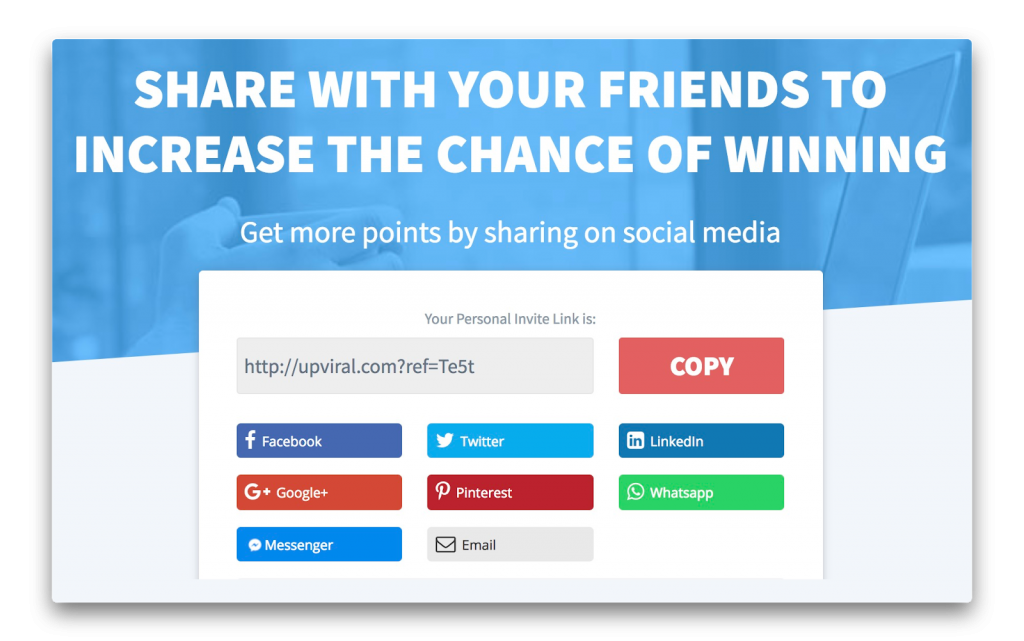
The contact details of entrants sit inside these platforms but you can either export this data and upload it to your email marketing service for ongoing communication with the entrants. Or you can employ a tool such as Zapier to automate that process and push data straight into your email marketing service.
Either way, you’ll end up with a list of contacts – their names and email addresses – for future use.
When running a giveaway to build your email list, follow these tips for greater success:
- Pick your prize carefully – choose a prize that your target audience will love but that’s closely aligned with your business. The goal is to collect the contact details of people who are likely to be interested in your business and what you sell, not just in what you’re giving away for free.
- Choose which platforms to run your giveaway – depending on your niche or the prize you’re offering, one social media platform might work better than others for targeting your audience. For example, you might choose to focus on a viral Instagram giveaway if your prize is highly photogenic. Alternatively, you may want to expand your reach by running your campaign across multiple channels.
- Run a giveaway campaign with a referral element to grow quicker – if you give competition entrants more chances of winning by referring friends, you can capture more contact details in less time. And you’ll spend less money too, as your competition entrants extend your reach even further, for free.
- Set up an automated drip campaign – when someone enters your competition, welcome them instantly with an email. And continue messaging them throughout the duration of the competition to encourage more referrals. You can also use these communications to start familiarising competition entrants with your brand, ready for your sales pitch once the competition has ended.
Run a lead generation campaign on Facebook
Facebook lead generation ads enable you to create native forms that are perfectly optimised for mobile. With just one click between ad and form, your target audience can easily enter their contact details, ready to hear from you.
The forms are pre-populated with the details Facebook knows about the user – such as their name and email address – making it even quicker and easier for people to connect with you and your business.
When setting up a lead generation campaign, you choose the campaign goal and what action you want people to take – whether it’s booking a consultation, requesting a free piece of content (your lead magnet) or simply subscribing to your emails.
Here’s an example of furniture brand Dot & Co using Facebook Lead Generation Ads to get more people on their mailing list:
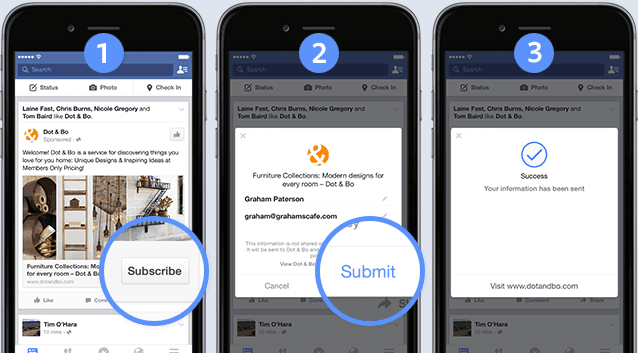
Facebook collects the data natively so all you need to do is upload the data into your email marketing tool for future email marketing campaigns.
You can also use a tool like Zapier to automate this so that new contacts are added to your mailing list as soon as they sign up. This is a good idea, as it means you can set up a welcome sequence of emails that are sent as soon as a subscriber shares their contact details via the Facebook form. This helps stop new subscribers from forgetting all about you after they’ve hit that ‘submit’ button.
Wrapping up
You don’t need a website to grow an email list. But you do need a landing page and a sign-up form to start collecting subscriber details. And you need an email marketing service to send emails to your subscribers.
Luckily, you can find all of these tools in one platform, like EmailOctopus, and use them for free when you’re growing your list from scratch.
And to grow your list faster there are tactics you can use to entice more people to sign up for your emails. These include:
- offering free content (a lead magnet)
- hosting a giveaway competition
- and running paid lead generation ads on Facebook
Depending on how quickly you want to grow your list, you can try all three tactics or you can choose the one that suits you best. Either way, by providing value to your audience and getting your offer in front of them, you’ll be well on your way to successfully building a quality mailing list.

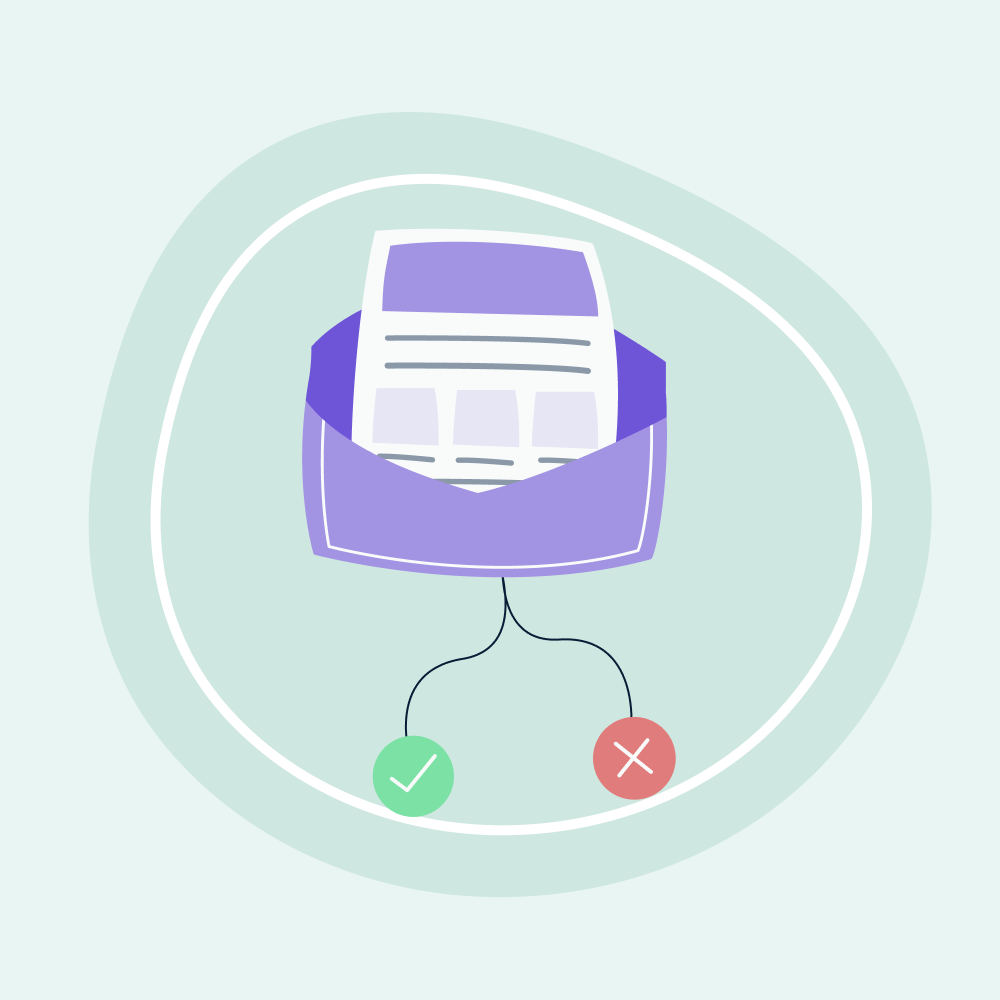
No Comments
Leave a comment Cancel